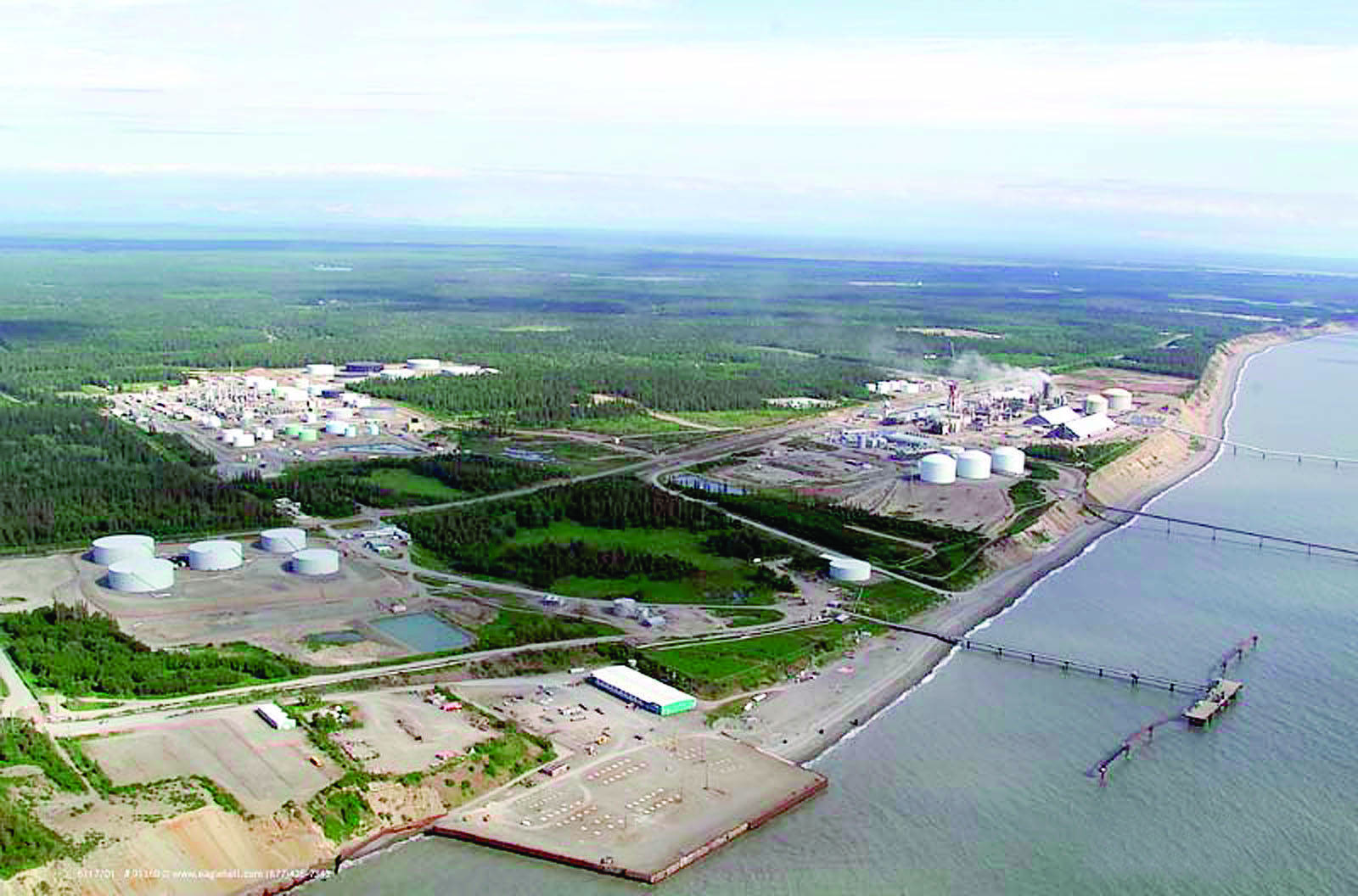The Alaska LNG project Thursday morning received approval for a federal permit, which is a significant step in the ongoing effort to monetize the natural gas supply on the North Slope.
The Federal Energy Regulatory Commission, which is responsible for the regulation and monitoring of natural gas transmission in the United States, issued a press release Thursday saying that the Alaska Gasline Development Corporation has been authorized to site, construct and operate the Alaska LNG project.
The project will include a pipeline approximately 807 miles long and 42 inches in diameter that will transport up to 3.9 billion cubic feet of gas per day from a gas treatment plant in Prudhoe Bay to liquefaction facilities in Nikiski. If completed, the liquefaction facilities would produce up to 20 million metric tons of liquefied natural gas for export. The U.S. Department of Energy has authorized the export of this natural gas to nations with which the United States has a Free Trade Agreement. Conditional export has also been authorized for countries that do not have a Free Trade Agreement with the United States, according to the press release from FERC.
Gov. Mike Dunleavy, in a press release issued by AGDC following the permit approval, said that FERC’s authorization is an important step in bringing the project to life, but there is still work to be done before the project becomes a reality. AGDC is still looking for additional investors for the project and is currently working on an updated cost estimate that is expected to be available in June, according to reporting from the Alaska Journal of Commerce.
“Today’s federal authorization is a key step in determining if Alaska LNG is competitive and economically beneficial for Alaska,” Dunleavy said. “I commend the AGDC team for their diligence. The ongoing project economic review and discussions with potential partners will determine the next steps for this project.”
The approval of the federal permit comes two months after FERC issued its final Environmental Impact Statement on the Alaska LNG project.
In the summary of the EIS, FERC staff said the project would have adverse impacts — both temporary and permanent — on the environment, while resulting in positive impacts on the state and local economies.
“We conclude that Project construction and operation would result in temporary to permanent impacts on the environment,” the summary states. “Most impacts would not be significant or would be reduced to less than significant levels with the implementation of proposed or recommended avoidance, minimization and mitigation measures, but some impacts would be adverse and significant.”
The summary specifies significant impact on the permafrost near the Mainline Facilities, adverse impacts on wetlands resulting in long recovery time for forested areas, permanent impacts on sensitive habitats of the Central Arctic caribou herd and significant impacts on air quality from construction, startup and operation at the liquefaction facilities.
Two Kenai Peninsula lawmakers — Rep. Gary Knopp, R-Soldotna, and Sen. Peter Micciche, R-Soldotna — issued statements of encouragement in response to the project’s permit approval.
“Today’s announcement is welcome news for Alaska’s efforts to monetize our North Slope natural gas,” Micciche, who chairs the Senate Resources Committee, said in a Thursday press release from the Alaska Senate Majority. “A successful project will mean good-paying jobs for Alaskans and cheap, reliable energy for the Interior. I commend the work of AGDC and remain optimistic about the long-term viability of Alaska LNG.”
“It’s been a tough time for Alaska’s oil and gas industry, but we are still a resource rich state and the industry remains a vital part of our future,” Knopp, who is a legislative member of AGDC, said in a Thursday press release from the Alaska House Majority. “Today’s achievement means the project is shovel ready when the economy improves, and it also provides a reminder of what we can accomplish when we work together as Alaskans.”

